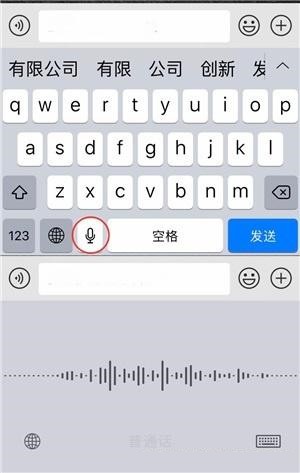 Web Front-end
Web Front-end JS Tutorial
JS Tutorial Some research materials on intuitive line wrapping of textarea_javascript skills
Some research materials on intuitive line wrapping of textarea_javascript skillsTwo days ago, I studied the line wrapping rules of textarea's intuitive rows. It's quite complicated:
How to choose the intuitive rows depends not only on the cols size, but also on the web page encoding method. The textarea of
cols="30" can actually accommodate 29 half-width characters per line. The number of full-width characters is not necessarily determined, and it is related to the encoding method of the web page.
In the actual measurement of IE6.0, the visual line break occurs at the red text (the red text is folded to the next line).
dddddddddddddddddddddddddddddddd //The continuous half-width content after the full-width is treated as a complete word. If the remaining position cannot accommodate the length of the word, it must be wrapped. This is a special rule A
The general rule when web pages are encoded in Unicode (the pop-up page of "Run Code" is encoded in this way, and the pages generated by JS are encoded in this way) is
("full" means that no matter what is followed by the full-width , half-width characters, all have to be wrapped)
123456789012345678901234567890 //29 half-width is full
12345678911234567890 //17 full-width is full
One two three four five six seven eight ninety one two three four five six seven eight ninety
One two three four five six seven eight ninety one two three four five six seven eight ninety
0 One Two Three Four Five Six Seven Eight Nine One Two Three Four Five Six One Seven Eight Ninety //16 full-width, 1 half-width occupied
0 One Two Three Four Five Six Seven Eight Nine Eleven Two Three Four Five six seven eight ninety
0 one two three four five six seven eight ninety one two three four five one six seven eight ninety //15 full-width, full-width is not allowed after 2 half-widths
01 one two three four Five six seven eight ninety one two three four five six seven eight ninety
01 one two three four five six seven eight ninety one two three four five two six seven eight ninety // 15 full-width, 2 half-width can be used Allow another half-width (if more than one half-width, special rule A is followed)
012 one, two, three, four, five, six, seven, eight, ninety, one, two, three, four, five, six, seven, eight, ninety // 15 full-widths, 3 half-widths are used
012 one two three four five six seven eight ninety one two three four five three six seven eight ninety
0123 one two three four five six seven eight ninety eleven two three four five six seven eight ninety //14 Full-width, after 4 half-width, full-width is not allowed
0123 One, two, three, four, five-six, seven-eight, ninety-one, two, three, four, five-six, seven-eight-ninety // 14 full-width, after 4 half-width, 1 half-width can be accommodated (more than 1 According to special rules for half-width A)
01234 one, two, three, four, five, six, seven, eight, ninety, one, two, three, four, five, six, seven, eight, ninety // 14 full-width, 5 half-width occupied
01234, one-two-three-four-five-six Seven eight ninety one two three four five five six seven eight ninety
012345 one two three four five six seven eight ninety one two three four five six seven eight ninety //13 full-width, full-width cannot be allowed after 6 half-width
012345 123456789112364567890 //13 full-width, after 6 half-width, 1 half-width can be accommodated (if more than 1 half-width, special rule A will apply)
0123456 One Two Three Four Five Six Seven Eight Nine One Two Three Four Five Six Seven Eight Ninety //13 full-width, 7 half-width occupied
0123456 One Two Three Four Five Six Seven Eight Nine Eleven Two Three Seven Four Five six seven eight ninety
01234567 one two three four five six seven eight ninety one two three four five six seven eight ninety // 12 full-width, 8 half-width occupied
01234567 one two three four five sixty-seven 8912834567890
0123456781234567891234567890//11 full-width, 9 half-width cannot be followed by full-width
012345678 one two three four five six seven eight nine one nine two three four five six seven eight nine ten //11 full-width, after 9 half-widths, 1 half-width can be accommodated (if more than 1 half-width, special rule A will apply)
0123456789 one two three four five six seven eight ninety one two three four five six seven eight ninety //11 full-width, 10 half-width occupied
......
0 one two three four 56789123451267890 //15 full-width, after 1 half-width, 2 half-width consecutive characters can be accommodated (special rule A applies when more than 2 half-widths are used), this item can be changed from 15 full-width, 3 half-widths are filled up to get
...
0 one, two, three, four, five, six, seven, eight, ninety, one, two, three, four, 1234, five, six, seven, eight, ninety // 14 full-width, 1 half-width It can accommodate 4 consecutive half-width characters (if there are more than 4 half-widths, special rule A is followed). This can be obtained from 14 full-widths and 5 half-widths.
...
01 one two three four 567891234234567890 //14 full-width, after 2 half-widths, 3 half-width consecutive characters can be accommodated (special rule A applies when more than 3 half-widths), this item can be composed of 14 full-width, 5 half-width is filled up to get
...
The line break position is not only related to the entire line of text before the line break position, but also to the red text (often the full-width text is folded because it cannot be squeezed down at the end of the upper line) of the next line).
To summarize:
CODE:[Copy to clipboard]x full width, y half width occupied = x full width, y-1 half width cannot be accommodated after full width = x full width, After y-n half-width characters, n half-width consecutive characters can be accommodated (if there are more than n half-width characters, special rules A apply).
So just do experiments to find out all the "full" situations.
Now list cols=30 and the "full" situation when the webpage is encoded in Unicode:
17 full-width
16 full-width, 1 half-width
15 full-width, 3 half-width
14 full-width, 5 half-width
13 full-width, 7 half-width
12 full-width, 8 half-width
11 full-width, 10 half-width
10 full-width, 12 half-width
9 full-width, 13 half-width
8 full-width, 15 half-width
7 full-width, 17 half-width
6 full-width, 19 half-width
5 full-width, 21 half-width
4 full-width, 22 half-width
3 full-width, 24 half-width
2 Full-width, 26 half-width
1 full-width, 28 half-width
29 half-width
Using the situation where a line break is on the verge of occurring according to the special rule A, it is easy to detect all "full" situations:
For example , one two three four five six seven eight nine ten 012345678912 one two three four five six seven eight nine ten //10 full-width, 12 half-width occupied
one two three four five six seven eight nine ten 0123456789123 one two three four five Sixty-seven, eighty-ninety // The red words are line-wrapped according to the special rule A, the blue words are full-width 9, and 13 half-width are used to wrap the line
cols=30. When the web page is encoded according to GB2312, the "full-width" rule is different. :
14 full-width, 1 half-width
13 full-width, 3 half-width
12 full-width, 5 half-width
11 full-width, 7 half-width
10 full-width, 9 half-width
9 full-width, 11 half-width
8 full-width, 13 half-width
7 full-width, 15 half-width
6 full-width, 17 half-width
5 full-width, 19 half-width
4 full-width, 21 half-width
3 full-width, 23 half-width
2 full-width, 25 half-width
1 full-width, 27 half-width
29 half-width
In this case, the "full" rule can only be measured through experiments based on the encoding method and cols of the web page. .
Count the number of full-width and half-width characters from the beginning of the textarea content, determine the position of the first visual line break according to the "full" rule and special rule A, and then start from the second line (including physical lines and visual lines) Line), count the number of full-width and half-width characters, and determine the position of the second intuitive line break according to the "full" rule and special rule A...and continue in this way until the end of the textarea content. In this way, all line break positions can be obtained.
Of course, it is not necessary or possible to do this experiment in actual applications. For example, select rows X to Y of a textarea. I haven’t learned the official method yet. Here’s what I did:
[Ctrl A Select all Note: If you need to introduce external Js, you need to refresh to execute
What I wrote in early 2004 should be the most comprehensive research at present, right? ?
| Current Position: Physical Row: Physical Column: Visible Row: Visible Column: Error Message: |
| CreateRange | CreateTextRange |
| CreateRange.getClientRects() | CreateTextRange.getClientRects() |
| CreateRange.getBoundingClientRect() | CreateTextRange.getBoundingClientRect() |
[Ctrl+A 全选 注:如需引入外部Js需刷新才能执行]
根据被某网站匿名转载的页面( http://dl.pconline.com.cn/html_2/4/545/id=38457&pn=0.html )上的网友留言,上面的《JS实现文本域的任意行选定》示例代码有一处bug:即在滚动条不在顶端的情况下运行示例代码会出错。现已修正:只增加了一行代码
CODE:
src.scrollTop=0 //确保开始数行数时滚动条位于顶部
[Ctrl+A 全选 注:如需引入外部Js需刷新才能执行]
 excel表格要怎么换行Feb 09, 2024 pm 02:00 PM
excel表格要怎么换行Feb 09, 2024 pm 02:00 PMExcel在是使用的过程中我们要进行很多不一样的操作,有的时候需要在一个单元格内换行,那么想要换行具体要怎么操作呢?下面就来看一下电脑excel表格换行方法吧。【excel表格操作方法合集】excel表格要怎么换行答案:可以通过自动换行和设置单元格格式进行操作。一、自动换行1、我们在表格中选择需要进行换行的区域之后在【开始】页面中点击【自动换行】;2、然后我们在调整A列宽度为合适值就可以了;二、设置单元格格式1、首先我们选择需要进行换行的区域之后右击鼠标,点击【设置单元格格式】;2、然后在弹出的
 BarTender中如何换行-BarTender中换行的方法Mar 05, 2024 pm 07:52 PM
BarTender中如何换行-BarTender中换行的方法Mar 05, 2024 pm 07:52 PM很多用户在办公中都会使用BarTender软件,最近一些新用户询问BarTender中如何换行?下文小编就为各位带来了BarTender中换行的方法,让我们一同来下文看看吧。1、在BarTender中,单击工具栏中的创建文本按钮,选择创建单行文本,输入文本内容。2、双击创建的文本对象,打开文本属性对话框。切换至“文本格式”选项卡,将右侧的“类型”勾选为“段落”。3、单击关闭,调整文本框大小或输入更多文字,或根据实际要求换行都可以。
 在苹果电脑上如何实现Excel单元格换行Feb 18, 2024 pm 08:39 PM
在苹果电脑上如何实现Excel单元格换行Feb 18, 2024 pm 08:39 PM苹果电脑Excel单元格内换行苹果电脑的Excel软件是一款强大的电子表格工具,它提供了许多方便的功能,以帮助用户进行数据处理和分析。在使用Excel时,有时我们需要在单元格内输入多行文本,以便更好地组织和呈现数据。然而,由于苹果电脑的Excel与Windows版本的Excel略有不同,因此换行的方法也有所不同。在Windows版本的Excel中,我们可以直
 苹果手机怎么换行 苹果手机设置换行的操作步骤Mar 22, 2024 pm 06:50 PM
苹果手机怎么换行 苹果手机设置换行的操作步骤Mar 22, 2024 pm 06:50 PM1、多次按空格键,将光标移动到最右边处,再输入文字就可以实现换行了。2、需要换行时点击键盘上的话筒图标,语音说【换行】。3、备忘录使用场景中,输入法中有【换行】选项,可通过复制的方式实现换行。4、在appstore中下载其他第三方输入法使用。
 PyCharm教程:快速掌握自动换行功能Feb 23, 2024 am 08:33 AM
PyCharm教程:快速掌握自动换行功能Feb 23, 2024 am 08:33 AMPyCharm是一款功能强大的Python集成开发环境,其自动换行功能可以帮助开发者更加高效地编写代码。本文将介绍如何快速掌握PyCharm中的自动换行功能,并提供具体的代码示例。一、启用自动换行功能在PyCharm中,默认情况下是不启用自动换行功能的,需要手动设置才能使用。具体的操作步骤如下:打开PyCharm,进入File->Settings;
 Go语言中如何输出带有换行符的文本Mar 15, 2024 pm 04:15 PM
Go语言中如何输出带有换行符的文本Mar 15, 2024 pm 04:15 PMGo语言是一种现代化、高效且简洁的编程语言,广泛应用于各种领域的软件开发中。在Go语言中,输出带有换行符的文本非常简单,可以通过使用fmt包提供的Println函数实现。下面我们将具体介绍如何在Go语言中输出带有换行符的文本,以及相关的代码示例。在Go语言中,想要输出带有换行符的文本,可以使用fmt包提供的Println函数。Println函数会在输出文本的
 PHP替换换行的方法详解Mar 20, 2024 pm 01:21 PM
PHP替换换行的方法详解Mar 20, 2024 pm 01:21 PMPHP替换换行的方法详解在PHP开发中,有时候我们需要对字符串中的换行符进行替换或处理。换行符在不同平台下可能会有不同的表示方式,因此需要对其进行统一处理,以确保字符串在不同环境下的显示效果一致。本文将详细介绍PHP中替换换行的方法,包括常见的换行符和具体的代码示例。一、常见的换行符在不同操作系统中,换行符的表示方式可能略有不同。主要的换行符包括:Windo
 如何交换Excel中列的顺序Feb 20, 2024 am 10:28 AM
如何交换Excel中列的顺序Feb 20, 2024 am 10:28 AMexcel是一款功能强大的电子表格软件,可以帮助我们处理各种数据和信息。在使用excel时,有时候我们需要调整表格的布局,包括换行和列顺序。下面,我将为大家详细介绍excel怎样换行和调整列的顺序。一、换行1.使用换行符:在excel中,我们可以使用换行符来实现换行。具体操作如下:a.选中需要进行换行的单元格或单元格区域。b.在选中的单元格中输入想要换行的


Hot AI Tools

Undresser.AI Undress
AI-powered app for creating realistic nude photos

AI Clothes Remover
Online AI tool for removing clothes from photos.

Undress AI Tool
Undress images for free

Clothoff.io
AI clothes remover

AI Hentai Generator
Generate AI Hentai for free.

Hot Article

Hot Tools

VSCode Windows 64-bit Download
A free and powerful IDE editor launched by Microsoft

PhpStorm Mac version
The latest (2018.2.1) professional PHP integrated development tool

DVWA
Damn Vulnerable Web App (DVWA) is a PHP/MySQL web application that is very vulnerable. Its main goals are to be an aid for security professionals to test their skills and tools in a legal environment, to help web developers better understand the process of securing web applications, and to help teachers/students teach/learn in a classroom environment Web application security. The goal of DVWA is to practice some of the most common web vulnerabilities through a simple and straightforward interface, with varying degrees of difficulty. Please note that this software

Zend Studio 13.0.1
Powerful PHP integrated development environment

EditPlus Chinese cracked version
Small size, syntax highlighting, does not support code prompt function





